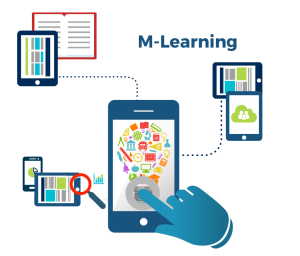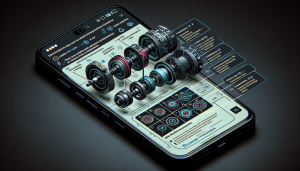
Myths about Mobile Learning in Skilled Trades
In the world of skilled trades, where hands-on experience and practical knowledge reign supreme, mobile learning has emerged as a game-changer. However, despite its growing prominence, there are still misconceptions surrounding this innovative approach to education. Let’s debunk 10 common myths about mobile learning in the context of skilled trades.
Myth 1: Mobile learning is only for theoretical knowledge
Reality: Mobile learning goes beyond theory. While it does provide access to theoretical content, it also offers interactive simulations, virtual reality experiences, and video tutorials that allow learners to practice and hone practical skills. From welding techniques to electrical circuit simulations, mobile learning covers a wide spectrum of hands-on learning opportunities in skilled trades.
Myth 2: Mobile learning lacks depth and complexity
Reality: Mobile learning platforms are equipped with sophisticated content that caters to the diverse needs of skilled trades. Whether it’s mastering complex machinery operations or understanding advanced construction techniques, mobile learning resources offer in-depth explanations, interactive modules, and real-world scenarios that challenge learners and promote critical thinking.
Myth 3: Mobile learning is isolating and lacks collaboration
Reality: On the contrary, mobile learning fosters collaboration and interaction among learners in skilled trades. Discussion forums, virtual classrooms, and collaborative projects enable learners to connect with peers, share insights, and seek guidance from experts in the field. Through collaborative learning activities, mobile platforms promote teamwork and knowledge exchange, enhancing the overall learning experience.
Myth 4: Mobile learning is a passing fad
Reality: Mobile learning has proven to be a resilient and enduring educational trend. With the increasing ubiquity of smartphones and tablets, coupled with the demand for flexible learning solutions, mobile learning is here to stay. Its adaptability to evolving technologies and learner preferences ensures its continued relevance and impact in the realm of Skilled Trades Education.
Myth 5: Mobile learning requires expensive devices
Reality: While high-end devices can enhance the mobile learning experience, they are not a prerequisite. Mobile learning platforms are designed to be accessible on a wide range of devices, including smartphones, tablets, and even desktop computers. Additionally, many mobile learning resources are available for free or at a minimal cost, making them affordable for learners from all socioeconomic backgrounds.
Myth 6: Mobile learning is ineffective for hands-on skills
Reality: Mobile learning complements hands-on training in skilled trades by providing supplementary resources and reinforcement activities. Interactive simulations, 3D modeling, and augmented reality applications allow learners to practice hands-on skills in a virtual environment before applying them in real-world scenarios. Mobile learning enhances the efficiency and effectiveness of hands-on training, leading to better retention and mastery of skills.
Myth 7: Mobile learning is time-consuming
Reality: On the contrary, mobile learning offers flexibility and convenience to learners in skilled trades. With anytime, anywhere access to learning materials, learners can engage in bite-sized learning sessions during breaks on the job site or while commuting to work. Mobile learning accommodates busy schedules and empowers learners to take control of their learning journey without sacrificing productivity.
Myth 8: Mobile learning is impersonal
Reality: Mobile learning platforms employ various strategies to personalize the learning experience for individual learners in skilled trades. Adaptive algorithms, competency-based assessments, and personalized learning paths ensure that each learner receives tailored content and support according to their unique needs and proficiency level. Mobile learning promotes self-directed learning and empowers learners to progress at their own pace.
Myth 9: Mobile learning is insecure
Reality: Mobile learning platforms prioritize security and privacy to protect sensitive data and ensure a safe learning environment for users. Robust encryption, secure authentication protocols, and regular security updates safeguard against unauthorized access and data breaches. Additionally, compliance with industry standards and regulations ensures that mobile learning platforms adhere to the highest security standards.
Myth 10: Mobile learning is not as effective as traditional classroom training
Reality: Numerous studies have demonstrated the effectiveness of mobile learning in improving learning outcomes and knowledge retention in skilled trades. The flexibility, interactivity, and accessibility of mobile learning make it a valuable complement to traditional classroom training. By combining the strengths of both approaches, educators can create comprehensive learning experiences that cater to the diverse needs of learners in skilled trades.
In conclusion, mobile learning is a dynamic and versatile educational tool that dispels common myths and misconceptions in skilled trades. By debunking these myths and embracing the transformative potential of mobile learning, educators and learners can unlock new opportunities for skill development and career advancement in the ever-evolving landscape of skilled trades. Ready to take step on your mobile learning journey in skilled trades? Visit https://xlr8edlearning.ca/ and take the first step towards unlocking your full potential.



